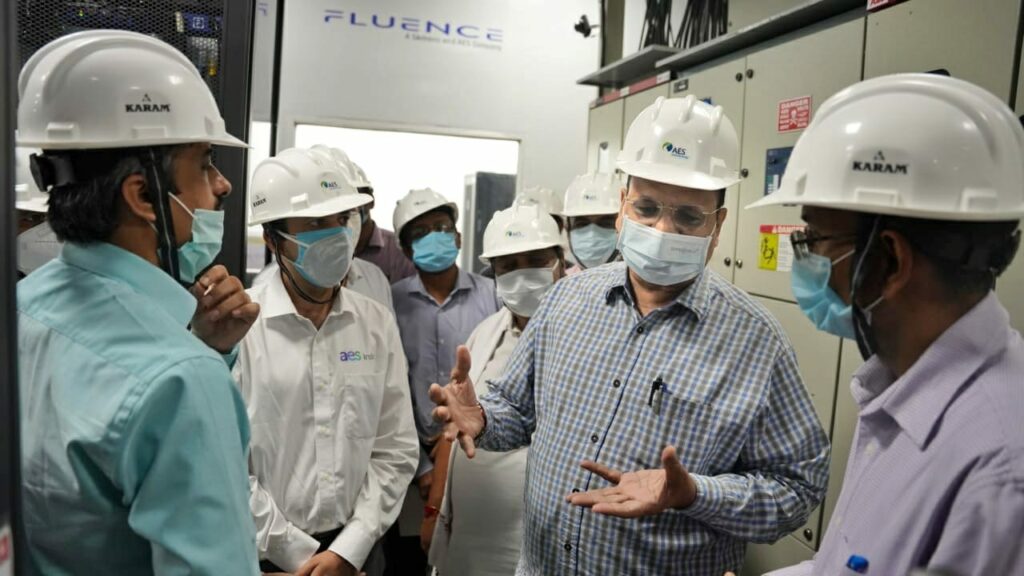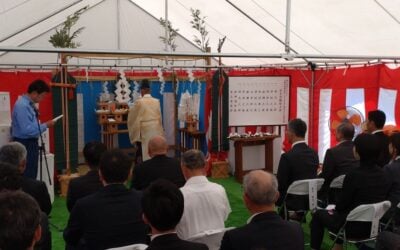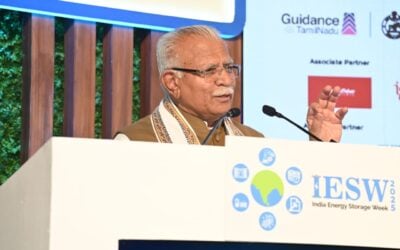
India’s biggest grid-scale battery storage system to date received a visit from Delhi government minister Satyendar Jain, who emphasised the urgent need for energy storage to stabilise the grid and incorporate higher shares of renewable energy sources.
Jain, Delhi’s Minister of Power and a number of other areas including Health, Irrigation and Urban Development, visited the 10MW / 10MWh battery energy storage system (BESS) at a substation belonging to distribution network company Tata Power DDL last week.
Enjoy 12 months of exclusive analysis
- Regular insight and analysis of the industry’s biggest developments
- In-depth interviews with the industry’s leading figures
- Annual digital subscription to the PV Tech Power journal
- Discounts on Solar Media’s portfolio of events, in-person and virtual
Inaugurated in 2019, the system supplied by Fluence uses nickel manganese cobalt (NMC) lithium-ion batteries to add flexibility and stability to the grid network, help manage peak load, enhance reliability and protect a number of critical functions with backup power for the distribution company. The system could have a direct critical facilities backup benefit for as many as 1.8 million of Tata Power DDL’s total 7 million customers.
The Rohini BESS performs multiple important applications, thereby maximising the value it provides. These include preventing power transformers from overloading, volt-var regulation, reactive power management, ancillary services (frequency regulation), price deviation settlement and others. NMC chemistry batteries were selected due to their fast ramp-rate capabilities, Tata Power DDL said.
As well as being India’s first and biggest grid-scale BESS to date, it is also thought to be the largest grid-connected system of its type in the wider South Asia region. Minister Jain said that with rapid growth in rooftop solar PV and electric vehicles (EVs) supported by local government policies, Delhi has an urgent need for battery storage. Tata Power DDL said in a press release that the minister suggested an energy storage deployment target or aspiration could be set.
Precursor to wider rollout across Delhi
According to further remarks from the minister reported by local new outlet The Hindu, the Delhi Government will roll out a network of around 600MW more installations of a similar type to Fluence’s Rohini project. The 10MW system’s operation will be reviewed in the coming weeks and its ability to be replicated elsewhere studied, Jain reportedly said. Tata Power DDL is jointly owned by Tata Power and the Delhi government in a respective 51%:49% split.
Jain also visited a 150kWh / 528KWh “grid-connected community battery storage system” as it was inaugurated in March this year, at another Tata Power DDL substation, which will assist the network operator in managing peak load in Rani Bagh, Delhi. That lithium-ion system was supplied by Nexcharge, a joint venture (JV) formed by Indian lead acid battery specialist Exide and Swiss advanced battery storage company Leclanche. Like its bigger counterpart, it is hoped that will also prove a replicable model.
Development of large-scale lithium battery projects across India have focused mostly on solar-plus-storage projects awarded through tenders by local governments and the national Solar Energy Corporation of India. However, plans for various new tenders for standalone battery storage capacity have been revealed in the past few months, including 4,000MWh of tenders announced by Union Government minister RK Singh and 1,000MWh of planned BESS installations by state-owned power producer NTPCC. SECI itself has said it will launch a 2,000MWh standalone storage tender in the coming months.
While every country in the South Asia holds potential to benefit from the deployment of battery storage as decarbonisation and energy system modernisation progress, India is very likely to lead the region, a recent study from the US National Renewable Energy Laboratory (NREL) said. Energy storage could represent between 10% and 25% of India’s entire installed power capacity by 2050, NREL said. Meanwhile the country is targeting having 450GW of renewable energy by 2030.






